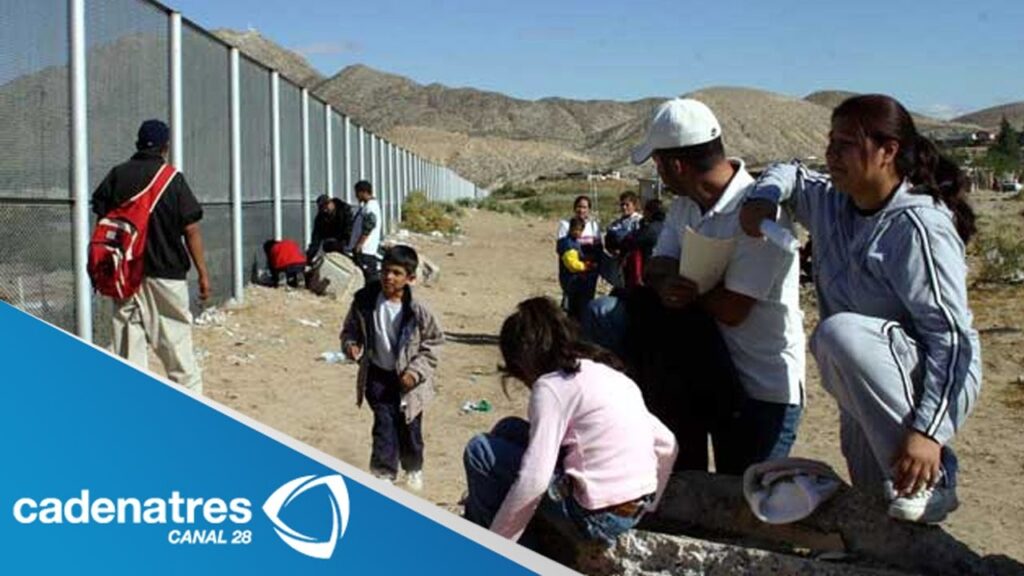The Plight of Exploited Mexican Migrant Workers
Mexico’s rich culture and breathtaking landscapes have long captivated the hearts of travelers from around the world. Yet, while visitors venture through picturesque towns and indulge in the vibrant local life, a less conspicuous narrative unfolds in the background. This narrative is one of hardship and endurance, particularly for the scores of Mexican migrant workers who leave their homes in search of better opportunities. Their expectation of finding a life filled with promise is often met with the reality of exploitation and harsh living conditions.
Many of these workers find themselves in agricultural fields, construction sites, and factories where their labor is heavily demanded but inadequately rewarded. Safety measures and health regulations are often ignored, exposing workers to hazardous conditions that result in injury or, in extreme cases, fatalities. The disparity between the value of their hard work and the compensation they receive is stark. Wages are frequently below the minimum requirement, failing to reflect the intensity and hours dedicated to their jobs.
The plight of these workers is exacerbated by their legal status. Those who migrate without proper documentation find themselves trapped in a cycle of vulnerability, with limited access to legal recourse or social services. They face the constant threat of deportation, a reality that diminishes their negotiating power to improve work conditions or report abuses. Racism and discrimination further marginalize Mexican migrant workers, isolating them from support networks and resources that could otherwise aid them in navigating their challenges.
The stories of exploited Mexican migrant workers are often overshadowed by the allure of Mexico as a travel destination. It’s crucial to shed light on these untold experiences and advocate for systemic change. The journey towards improved worker rights and fair treatment is complex, but awareness is a pivotal first step. As travelers and global citizens, it is important to remain conscious of the realities that exist beyond the veneer of tourist attractions, recognizing the resilience and rights of every individual contributing to the rich tapestry of Mexico’s economy and culture.
Historical Context of Mexican Migration Programs
Migration has been a central component of Mexico’s history for over a century. Rooted in the early 20th century, Mexican migration to the United States began as a series of sporadic flows, mainly influenced by socio-economic conditions and labor demands found across the border. During the Mexican Revolution from 1910 to 1920, political unrest and the promise of better opportunities led to an increase in the movement of people seeking safety and work in the United States.
In the 1940s, the Bracero Program marked a significant turn in the formalization of Mexican migration. A landmark bilateral agreement between the United States and Mexico, it allowed millions of Mexican men to work temporarily on agricultural contracts in the United States. The program was initially a wartime measure to fill the labor shortages in the agriculture and railroad industries created by World War II but continued until 1964, shaping migration patterns and family dynamics spanning both countries.
The end of the Bracero Program did not signal the conclusion of migration flows; rather, it led to new dynamics and the beginning of unauthorized migration. Without formal programs and facing limited economic opportunities at home, many Mexicans continued north, driven by established networks and the undiminished demand for labor. This migration, however, was marked by increased border security and the hazardous conditions that clandestine crossings entailed.
In response to the challenges of unauthorized migration, the governments of Mexico and the United States have sought to implement various policies and programs to manage the flow of migrants. Efforts such as the 1986 Immigration Reform and Control Act (IRCA) aimed to regularize the status of undocumented Mexican immigrants in the United States, which offered a pathway to legal residency for millions. Despite these efforts, the push-pull factors of migration continued to operate, influenced by NAFTA and economic interdependence.
Today, migration from Mexico to the United States is shaped by a complex blend of history, economics, and policy. While the number of Mexican migrants has declined due to various factors including improved economic conditions in Mexico and an aging population, it remains a critical area of interest for both nations. Contemporary policies continue to be informed by the historical context of Mexican migration programs, with the legacy of past movements deeply influencing present conversations and future directions.
The Harsh Realities Behind Labor Exploitation
Travel often brings to light the vibrant cultures, stunning landscapes, and renowned historical sites that make destinations like Mexico a magnet for tourists. Yet there’s a less picturesque reality that often remains shrouded from the visitor’s eye: the labor exploitation that exists within the industry. Workers at hotels, resorts, and even some tourist attractions are often subject to harsh work conditions, low wages, and long hours that are incongruent with the tranquil and hospitable image presented to vacationers.
The tourism boom has indeed created numerous jobs in Mexico, but the quality of these jobs is sometimes questionable. Labor rights violations are not uncommon, with many employees being denied proper contracts, fair pay, or adequate working conditions. The seasonal nature of tourism can also lead to employment instability, where workers may be hired for a busy period and laid off when the high season ends. This precarious employment leaves little room for job security or career advancement, making it difficult for many workers to escape the cycle of poverty.
Moreover, the demand for an “authentic experience” often perpetuates traditional forms of labor that are romanticized by visitors but are, in actuality, exploitative. Consider the enchanting handicraft markets or the picturesque street food stalls, where the reality is that many artisans and vendors work excessively long days for minimal profit. This is a direct result of the competitive pricing war encouraged by the desire to attract more tourists, inadvertently leading to a decline in the local standard of living.
In non-urban areas, especially within the agricultural sectors linked to tourism, such as the production of tropical fruits and vegetables, the situation can be even more dire. Child labor, inadequate health and safety measures, and exploitation of indigenous communities are issues that have been reported. These workers, often unseen by the tourists who benefit from their labor, pay the price for the affordability and abundance of luxury amenities that the travel sector offers.
Personal Stories from the Mexican Migrant Community
Traveling through Mexico uncovers a tapestry of stories, often untold, about the perseverance and fortitude of the Mexican migrant community. Each narrative reveals a journey marked by hope, family ties, and a pursuit of better opportunities—a poignant reminder of the human element often overlooked in discussions about migration.
One narrative is that of Lupe, who left her home in Chiapas in search of work that would enable her to send her children to school. Her journey was fraught with challenges, but now, years later, she manages a small store in Mexico City. Lupe’s success is a testament to her resilience, and she remains deeply connected to her roots, returning to Chiapas to help her community whenever she can.
In another account, we meet Carlos, whose trek from the coastal town of Veracruz to the bustling streets of Monterrey highlights the diverse reasons for internal migration within Mexico. Carlos moved to improve his skills as an artisan, and soon found that the vibrant culture and larger markets of Monterrey offered him the audience he needed to thrive. His story is one of cultural exchange and adaptability.
Lastly, there’s the collective story of a group of women from Guerrero who banded together to form a cooperative. They migrated to Puebla and started an enterprise that has not only provided them with a stable income but also a sense of empowerment. Each member brings her own tale of hardship and triumph, creating a rich mosaic that serves as an inspiration to their community and to those they left behind in Guerrero.
These stories represent just a few of the voices from the Mexican migrant community, echoing the complexity of the migration phenomenon and the indomitable spirit of those who are a part of it. Each narrative is a thread in the larger social fabric, emphasizing the importance of individual and collective experiences in shaping the cultural landscape of Mexico.
Legal and Social Implications for Exploited Migrants
Migrant exploitation in Mexico presents significant legal and social challenges that impact both individuals and the wider community. Legally, migrants who have been exploited may face an array of issues including a lack of proper documentation, restricted access to legal aid, and the potential for deportation. The labyrinth of immigration law can further exacerbate the vulnerability of these individuals, leaving them at the mercy of unscrupulous employers or coyotes (smugglers), who exploit their need for work and a better life. Frequently, they are forced to accept substandard working conditions and low wages, well below minimum legal entitlements.
Socially, the exploitation of migrants has far-reaching consequences. Exploited individuals often live on the margins of society, with limited access to healthcare, education, and other social services. This isolation can foster environments where abuse goes unnoticed and unchallenged, perpetuating cycles of poverty and exploitation. Public perception of migrants can also be negatively influenced by the stigma associated with illegal work and status, further marginalizing these communities and hindering their ability to seek help and integrate into society.
The community at large is also affected by the practices surrounding migrant exploitation. The undercutting of wages can lead to broader economic impacts, such as job displacement and wage stagnation for local workers. Moreover, the presence of an exploited workforce can create an uneven playing field for businesses, with unscrupulous employers gaining an unfair advantage by side-stepping labor laws and costs. Understanding and addressing the legal and social implications of exploited migrants is crucial to ensuring the protection of their rights, the integrity of labor markets, and the well-being of all community members.
Moving Forward: Advocacy and Support for Migrants
The call to adventure often rings for many individuals across the globe, leading them to set their sights on the diverse landscapes of México. However, for some, the journey is more about seeking a new beginning than a temporary escape. Migrants come to Mexico from various parts of the world, driven by factors ranging from economic to humanitarian. As they traverse this new horizon, they encounter unique challenges and the ever-present need for advocacy and support. Organizations and networks dedicated to assisting migrants have become crucial in ensuring these brave souls do not travel alone.
In the vast terrain that comprises Mexico’s borders, migrants may find themselves facing legal complexities, cultural barriers, and basic needs such as shelter and food. It is here where advocacy groups play a fundamental role. By offering guidance through legal proceedings, access to educational resources, and direct assistance in emergencies, these advocates become the backbone for many migrants’ successful integration into Mexican society. They do not merely offer services but stand as pillars of strength and encouragement in what can be an arduous journey.
Support for migrants extends far beyond legal counsel and advocacy. It’s equally important to address social inclusion and community integration. Programs that focus on language instruction and cultural exchange can empower migrants with the confidence to engage with their new communities. Moreover, creating safe spaces where experiences and stories can be shared fosters a sense of belonging and mutual understanding, validating the migrant’s experiences and hopes. These initiatives aim to weave the social fabric tighter, making room for diversity in its threads.
An essential aspect of advocating for migrants is to amplify their voices and experiences. Support networks encourage migrants to take active roles in their advocacy, promoting leadership within migrant communities. This approach not only bolsters their autonomy but also ensures policies and initiatives are truly reflective of their needs. As conversations around migration continue to evolve, having migrants at the forefront is a powerful way to drive positive change and progress in crafting a more inclusive and compassionate society.



